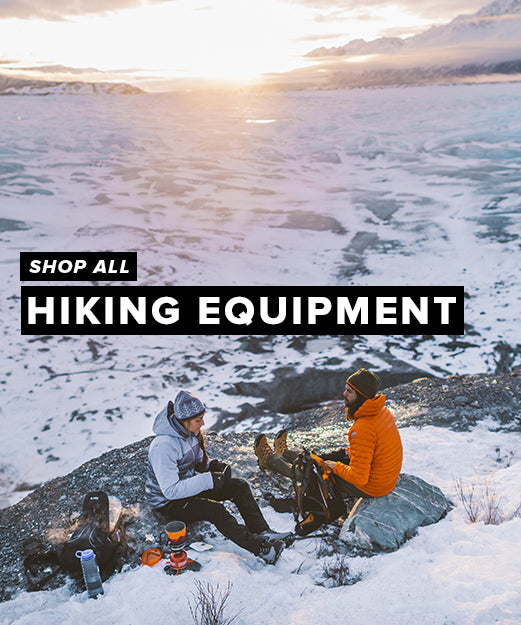(or any hill over 3000ft)
After realising that 15 years spent behind a desk had left me unfit, lethargic and in a serious rut, I decided to do something about it - so I climbed my first Munro, a Scottish mountain over 3000ft. I’ve now climbed 27 Munros, including Ben Nevis, and learnt a few things about hill walking as a beginner along the way. If you fancy climbing your first hill, here’s a beginner’s guide to bagging a Munro - or any hill over 3000ft.

1) Match your first mountains to your skills
As a beginner, whilst there’s no ‘easy’ hill over 3000ft, here are a few pointers to look out for which may make it easier:
- Height / Ascent - not all hill walks start at sea level – the hill may be 3000ft, but you might actually start at 1000ft – meaning 2000ft of actual ascent.
- Paths - is there one? The ‘easiest’ hills have well-maintained paths to the summit such as on Ben Lomond or the Llanberis path on Snowdon.
- Distance - check how far you will need to walk before you start climbing - this can add to your day significantly.
- Scrambling & drops - will you have to do any mild scrambling? You will need to get a head for heights!
2) Remember… location, location, location
Hill walking is not about where you are going (i.e to the summit) but instead it is all about knowing where you are. Weather conditions such as fog, snow or muddy ground conditions after heavy rain will mean that getting lost in the hills at some point is (almost) guaranteed. As a beginner, being able to navigate using a paper Ordnance Survey map and compass, including knowing how to set the map correctly and understand contour lines are essential skills all hillwalkers should have.
For extra protection, you can also use a GPS mobile app or device to keep track of where you are. However, don’t blindly follow the app like a zombie, and always carry an extra mobile phone battery pack. To help avoid getting lost in deep fog 2000ft up a hill, with no idea where you are, take a skills course in basic navigation, and remember to always tell someone your intended route, and when to expect you back.
3) The tortoise always wins the race
Hill walking safely is all about the fitness of your group’s slowest member - and there is no shame in admitting that, as a beginner, it might be you. Don’t expect to find climbing hills easy at first - or be embarrassed when you are passed multiple times on your way up the hill! Try to resemble the tortoise in the proverbial race and don’t rush - accidents often happen at the end of a walk, either due to tiredness, or a lack of concentration as you relax in anticipation of a drink at the finish.
4) Dress for the conditions
- Feet - wear supportive walking boots with a good grip, and good hiking socks – wet weather can mean the ground is very boggy!
- Trousers – this means no jeans as you will regret it once they are wet, instead, windproof trousers are best with a pair of waterproof trousers in your rucksack just in case.
- Top – layer up with a breathable base layer, then a down jacket or fleece. Always carry a hard shell waterproof jacket in case of wet weather.
- Don’t Forget - a hat, scarf or buff and a pair of gloves. Consider shock-proof carbon walking sticks, as climbing down can be tough on your knees.

5) The weather is unpredictable - at best
From blue skies in January to snow in April, the only thing to expect with the weather out in the hills is that it will be unpredictable. You can, however, get an idea of what weather might do from Mountain Weather Information Service and Met Office Mountain Weather. Look out for the following:
- Wind chill - the temperature on a mountain on average drops 1 degrees for every 100m, but the wind chill can double or even triple this.
- Wind speed - anything above 20mph is arduous, 50mph is a gale and dangerous.
- Sunlight - altitude amplifies the effect of the sun, and whilst British hills aren’t exactly alpine height, you can still easily burn.
- Visibility - checking the forecast is not just about hoping for hills clear of clouds, but fog and low cloud can be disorienting - and can roll in quickly.
6) Be prepared for anything…
The Scouts had the right idea - before setting out into the hills, preparation is key. Here are a few tips you might not have thought about:
- Check you have your OS map and safety gear - put together an emergency kit - a torch, a whistle, bivvy bag or shelter, and first aid kit which you can keep in your rucksack just in case.
- Pack all your gear the night before - stuffing your rucksack in the morning is guaranteed to mean you forget something essential. The only thing you should be packing in the morning is your lunch.
- Text ‘register’ to 999 - sign up to the Mountain Rescue text service in advance of anything potentially going wrong.
- Cut your toenails - what goes up a hill, must come down. Walking downhill for long periods puts pressure on your feet - especially your toenails. Blisters aren’t always the worst thing to happen on a walk.
- Don’t sleep in and forget about daylight - Short days, getting lost or walking slower than you expected can all result in getting home in the dark. Head torches are an essential part of your kit.
- Take spares - the first time you lose a glove in 30mph winds, or your hat in a bog half a mile back down the hill you will never forget to pack a spare again.
…
and finally,
7) Becoming addicted to hill walking happens to the best of us.
Thankfully with 282 hills in Scotland over 3000ft, six in Wales, including Snowdon, and three in England including Scafell Pike, there are plenty of big hills to climb! See you at the top.
Author Bio
Kate Hopper started bagging Munros after she realised that spending 15 years stuck behind a desk had left her tired, unfit and in a bit of a rut. She has since developed a (small) addition to the Scottish hills, having climbed 18,000m in the Scottish hills last year. Kate’s blog, Love, from Scotland, shows you how to get outside in Scotland.
 NEW!! Free UK Delivery
NEW!! Free UK Delivery Hassle-Free Returns
Hassle-Free Returns Clearpay
Clearpay









